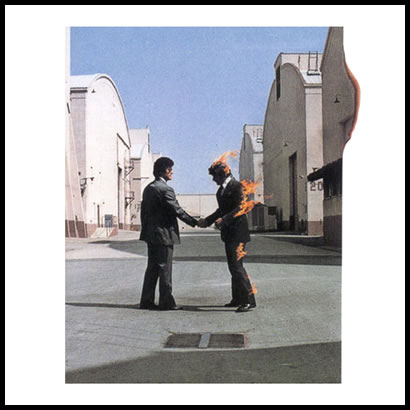



With hard work, much study and much reading I finally finished my thesis of semiotics analysis of Pink Floyd's album cover. I had the goal to proving that the album covers work in the same way as advertising, always has a reason and some kind of dimension of communication.
The communications dimensions can be divided into three types: affective, cognitive and connotative. The affective dimension is when someone has a predisposition to consumption of a particular object, for example: users of LSD in the '60s. They had an affinity with the psychedelic-style design, sharp colors, very colorful and lots of curves in the sources, which gave the consumer a purchase desire by the affinity he had with his lifestyle.
The connotative dimension, is about consumers to interact with the product. They want to enter the world of image, always wanting to discover the meaning of each element of design. Today, brands not only sell their quality, in the competition of the globalized worldm, quality no longer serves as a tool of persuasion. The big brands try to make the consumer come into your life style, they want the consumer likes the brands and feel like a member of the brand and lifestyle.
The other dimension is the cognitive. This aspect of communication is the tool that sells an ideology like propaganda or a sign of protest. Pink Floyd's Roger Waters era, has a phase that represents well this kind of dimension. Till the Wish You Were Here album to the Final Cut, this dimension has created a consumer desire for identification with the ideology of the band.
Pink Floyd used the anti-culture movement to criticize the capitalist world, the Cold War and even the Falklands War, to make their music a tool of protest. With a structuralist semiotic analysis of Roland Barthes, it is evident that each cover wanted to convey. Its connotation based on reading of Mind Over Matter, a book of Storm Thorgerson, shows what they wanted through the covers.
In a poster, press ad, the intention is always part of the dramatization of one idea through a copywirting, art direction and design and could not be different about the album covers. Storm Thorgerson, who made 90% of the album covers of the Pink Floyd, says that the cover is a selling tool, not as direct as an brand ad, but there is nothing different.
